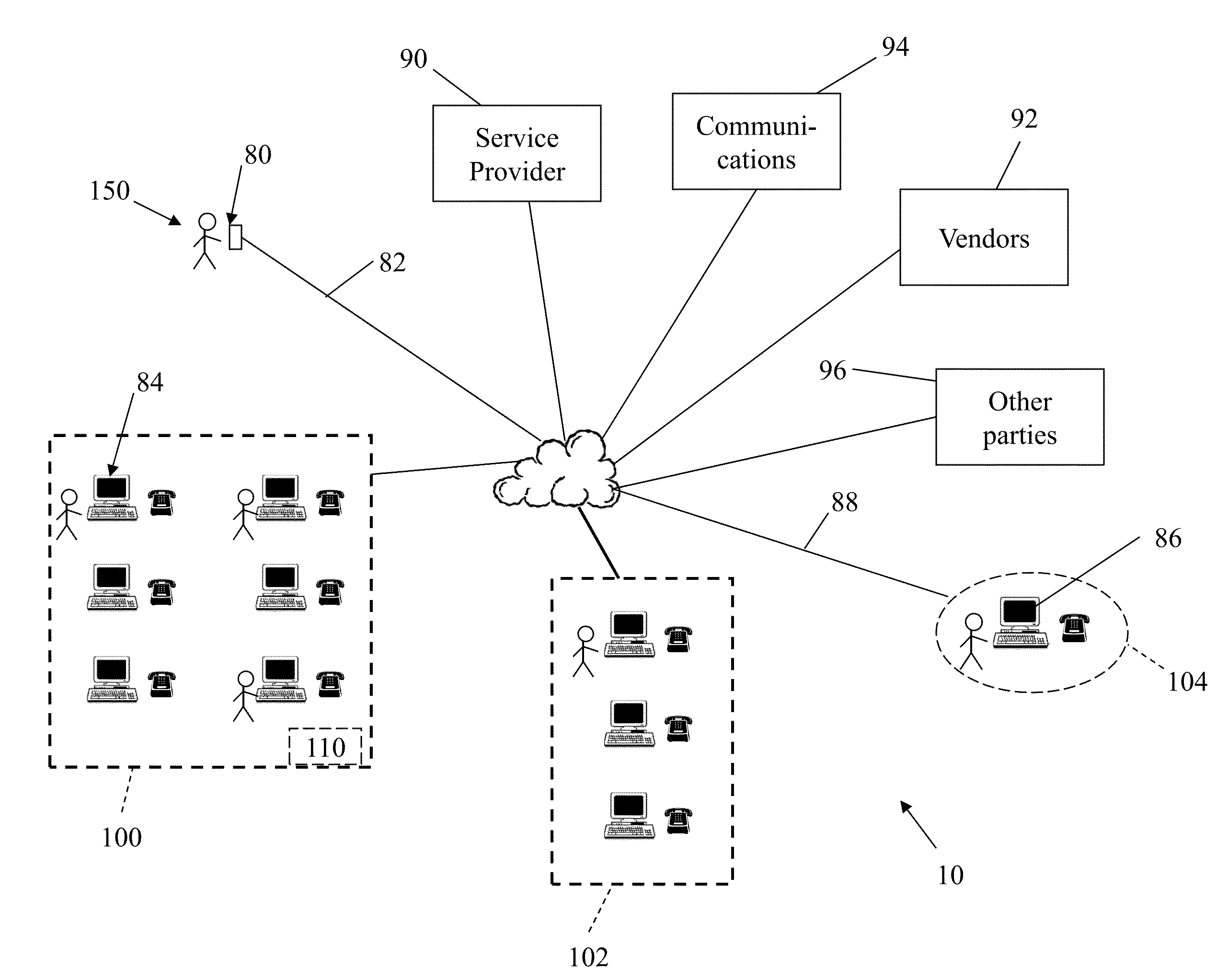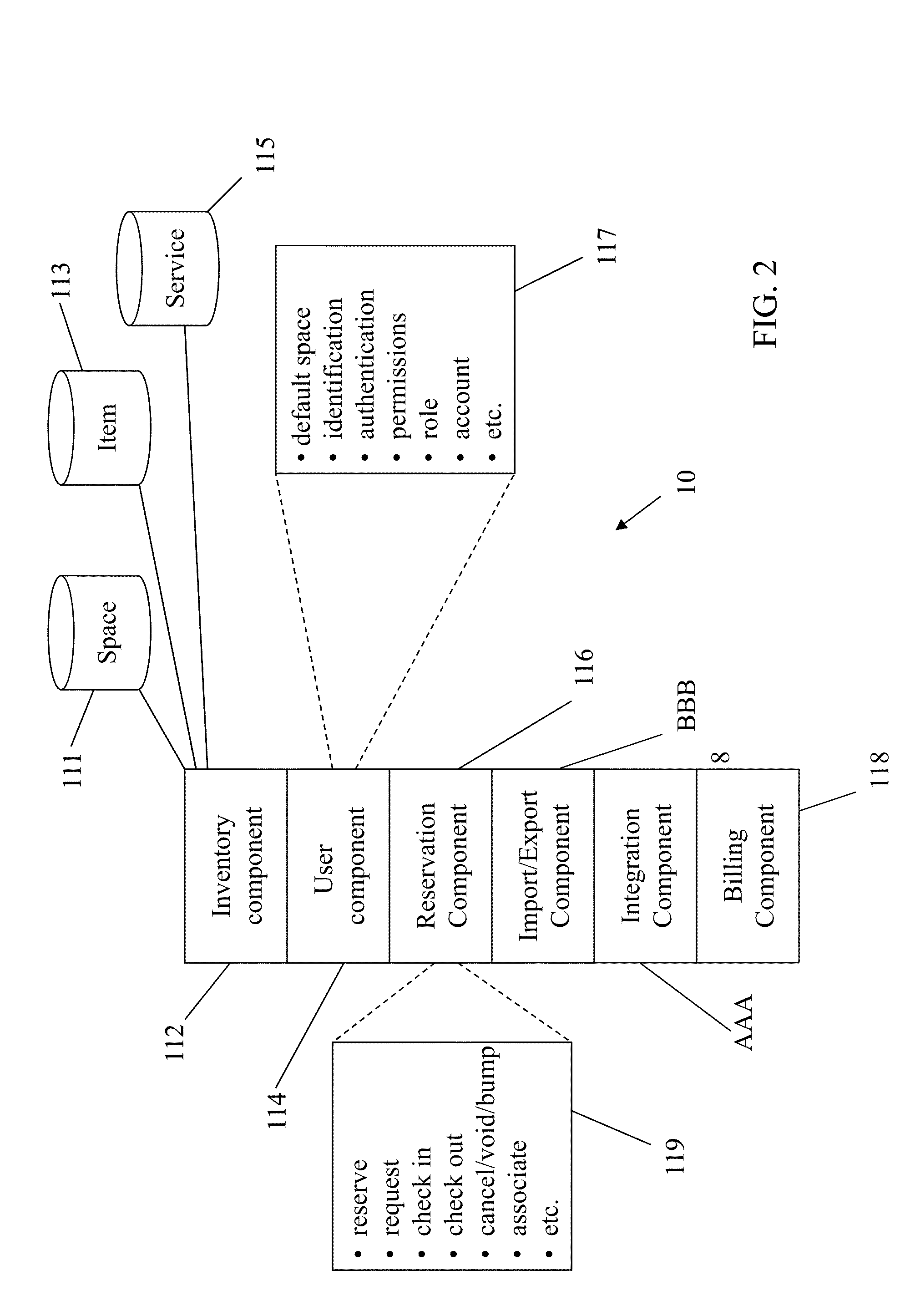System and Method for Facilitating Workplace Utilization and Occupancy Management Using Mobile Devices
a mobile device and workplace technology, applied in the field of computer-assisted management of business real estate, can solve the problems of labor-intensive bed checks, inability to manage resources across the enterprise, and inability to accurately know the actual use of real estate space,
- Summary
- Abstract
- Description
- Claims
- Application Information
AI Technical Summary
Benefits of technology
Problems solved by technology
Method used
Image
Examples
examples
[0182]Below are provided two examples implementing the system of the present invention in operation: the first example is an organization that has an upcoming lease renewal, and the second example is an organization that needs to add more employees to a facility that is fully allocated.
Company A (Too Much Empty Space)
[0183]Company A houses 750 people on six floors of a high rise building. The lease on the six floors expires in 18 months. The company is faced with three choices. Should it a) renew the lease on the six floors; b) consolidate onto fewer floors; or, c) move to a new facility?
[0184]Within Company A, people have noticed that on a day-to-day basis many desks go unused. Using security-card entry data for the previous twelve-month period, the actual use of space component of the present invention determines that employees can be categorized into three groups: Anchors, Shared, and Mobile. The 50 Anchor people can be assigned using the WMC of the present invention to workspace...
PUM
 Login to View More
Login to View More Abstract
Description
Claims
Application Information
 Login to View More
Login to View More - R&D
- Intellectual Property
- Life Sciences
- Materials
- Tech Scout
- Unparalleled Data Quality
- Higher Quality Content
- 60% Fewer Hallucinations
Browse by: Latest US Patents, China's latest patents, Technical Efficacy Thesaurus, Application Domain, Technology Topic, Popular Technical Reports.
© 2025 PatSnap. All rights reserved.Legal|Privacy policy|Modern Slavery Act Transparency Statement|Sitemap|About US| Contact US: help@patsnap.com



